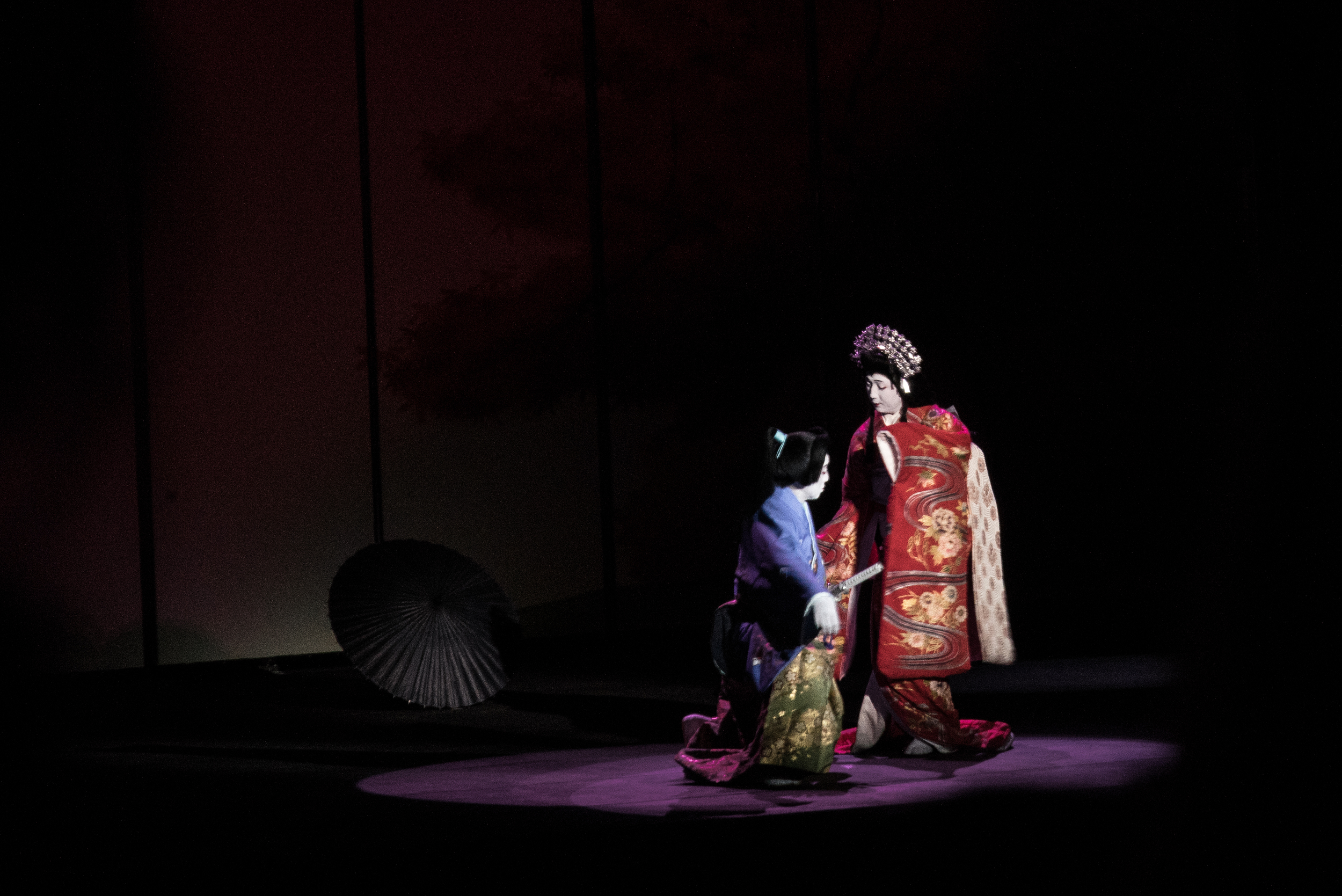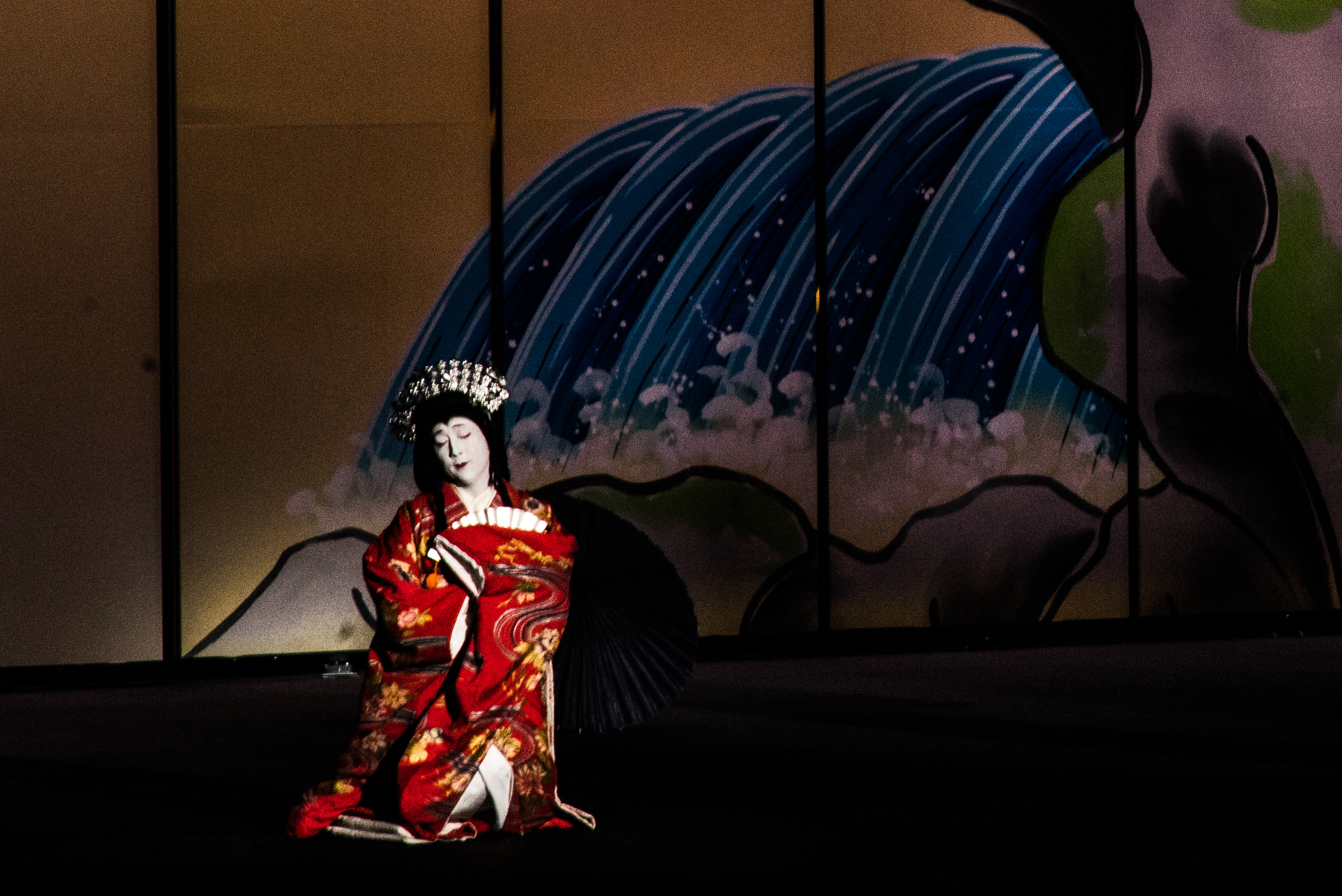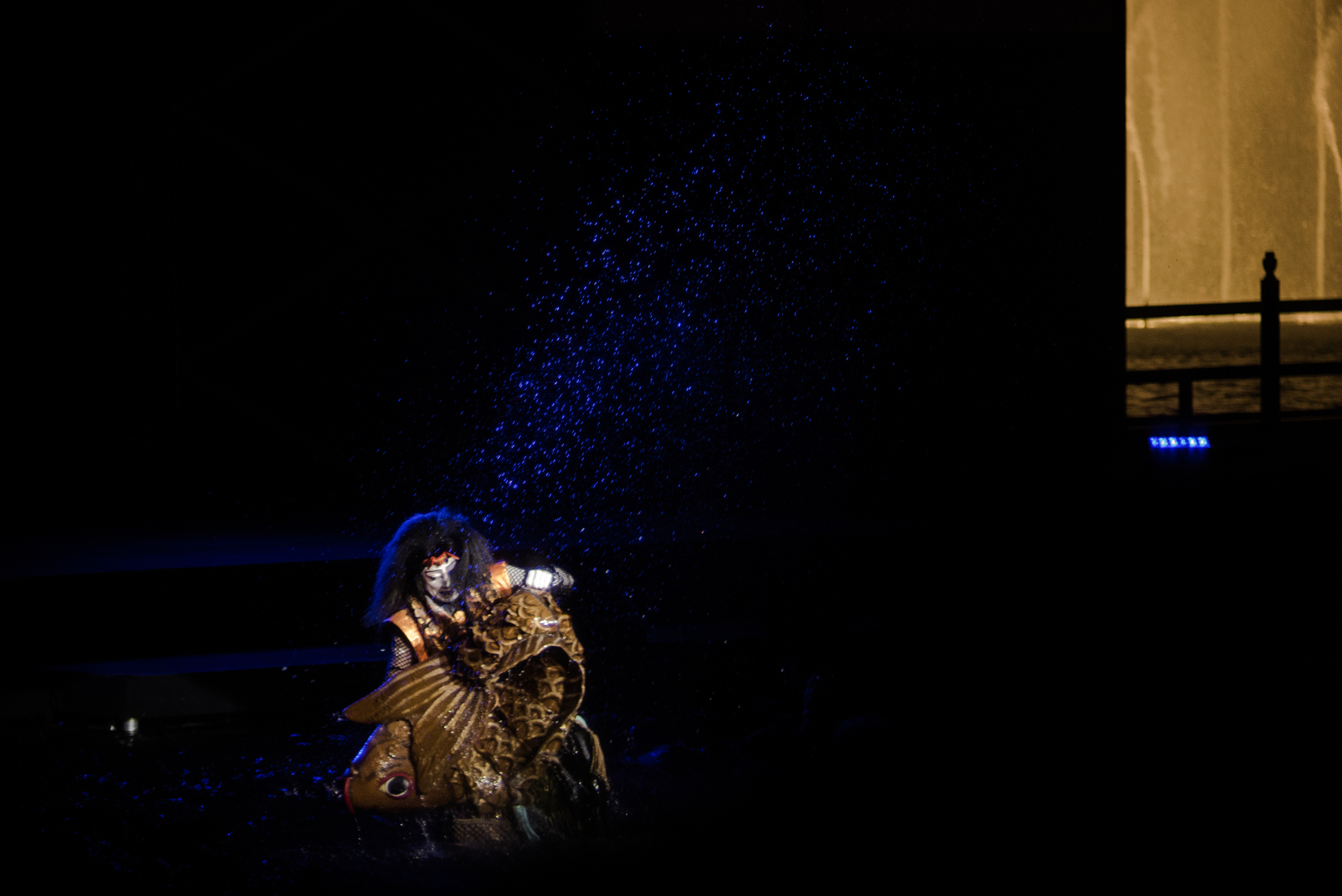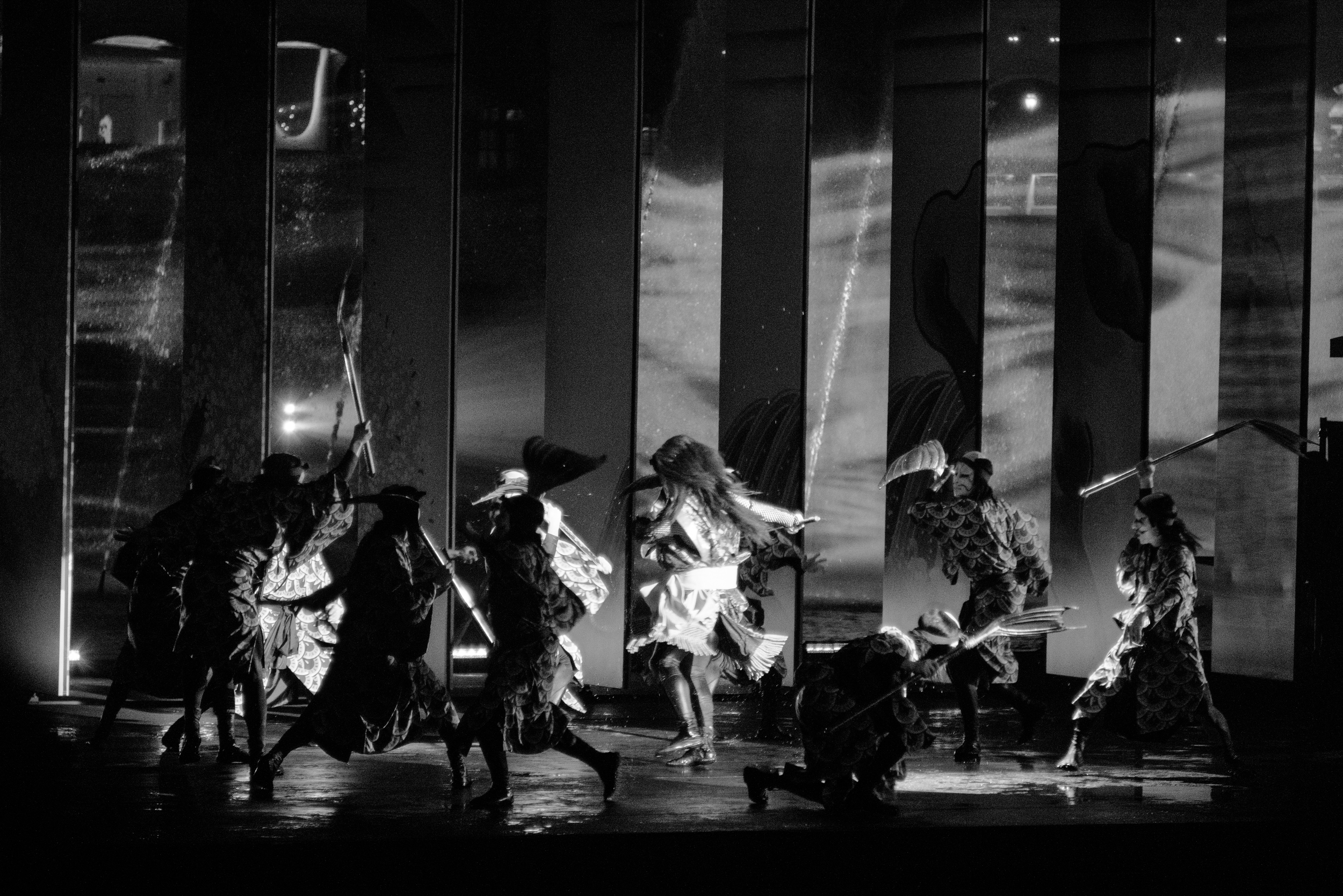Tokimado Shiganosuke fights the mighty koi spirit of Kozakura-hime. Photo: Ross Takahashi
A lone woman crosses the large waters in front of the Bellagio famous for the dancing water displays. She sings her song along the cool mists of water in the hot summer air; wearing a brilliantly colored kimono she represents a mystical beauty alone in the dark. Caught by her charm and beauty, the mighty Tokimado Shiganosuke begins to charm her win a tale of song and dance. However, not all things are as they appear--
Shiganosuke being charmed by the red Koi in disguise. Photo: Ross Takahashi
In celebration of the Las Vegas Kabuki 2015-2016 festival the Bellagio Hotel and Casino hosted Las Vegas' first Kabuki show. With a dazzling display of water and use of powerful projectors by Panasonic, the show Koi-Tsukami sets out to combined the traditions of Kabuki theatre over 400 years in the making with modern 21st century flare.
The show features a mighty fight between Tokimado Shiganosuke and the vengeful spirit of a mighty red Koi disguised as a beautiful young woman, seeking revenge for her fallen love. In a battle that rages between the fountain waters, to the stage, and onto massive water jets, Shiganosuke takes on the Koi represented in various forms as he himself develops as a mighty warrior.
Shiganosuke in a mighty battle with the Koi spirit. Photo: Ross Takahashi
While the traditional theatre stage featured lackluster art (a very important aspect of Kabuki theatre), the jaw dropping use of projectors compensated for it. A digital and interactive recreation of tradition is a challenging risk, but something that came together just right for Koi-Tsukami. While the three days of performances from August 14-16 has sadly come to an end, it leave me eager to see what other kind of tantalizing displays the company can muster up next. Check out the full gallery below:
-Trey Takahashi









